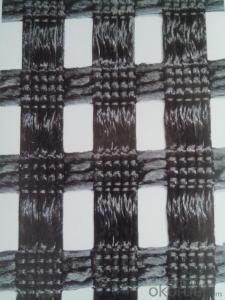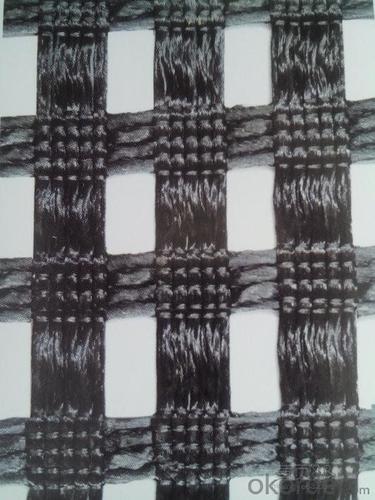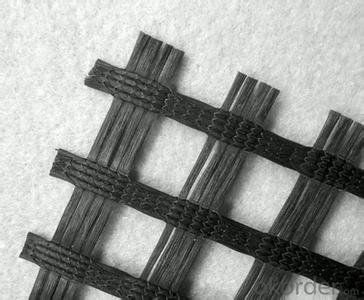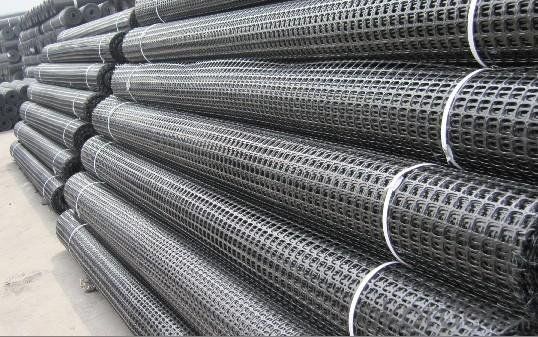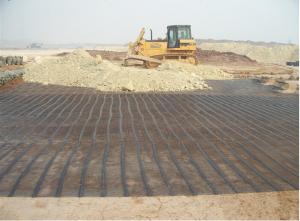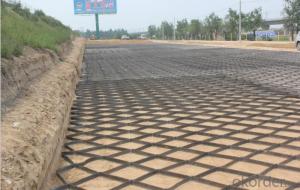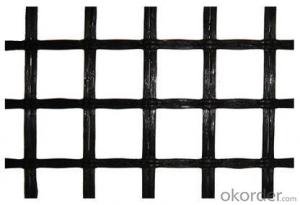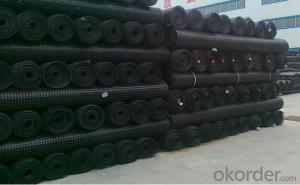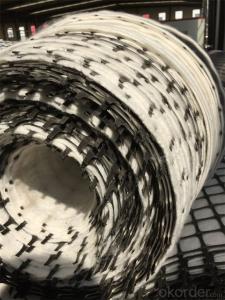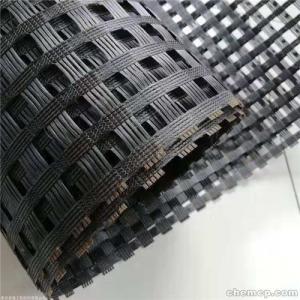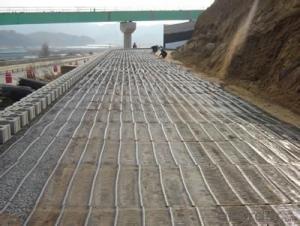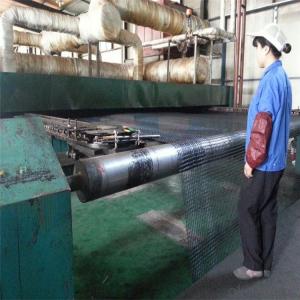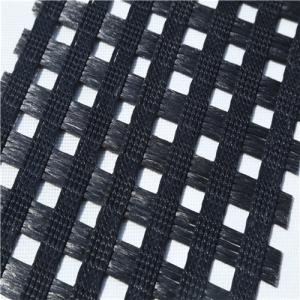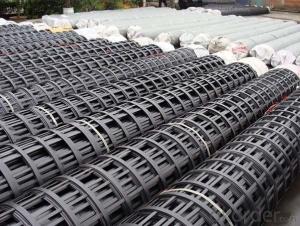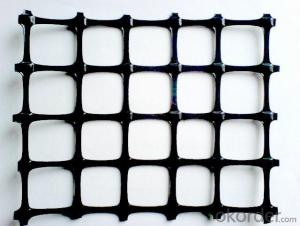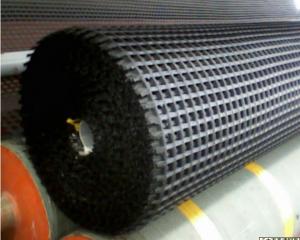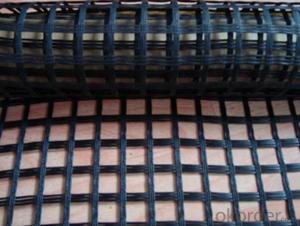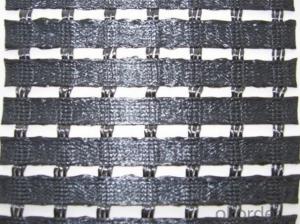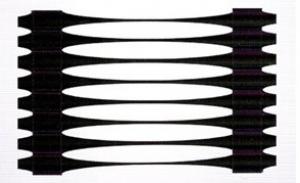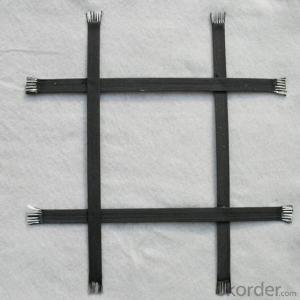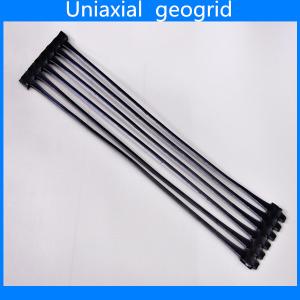High Strength Polymer Geogrids
- Loading Port:
- China main port
- Payment Terms:
- TT OR LC
- Min Order Qty:
- 5000 m²
- Supply Capability:
- 1000000 m²/month
OKorder Service Pledge
OKorder Financial Service
You Might Also Like
Introduction of Polyester Geogrid:
Polyester geogrid is a new kind of favorable earthwork base material to strength the road surface and roadbed, which composed of high strength polyester yarns coated with an inorganic sizing agent.
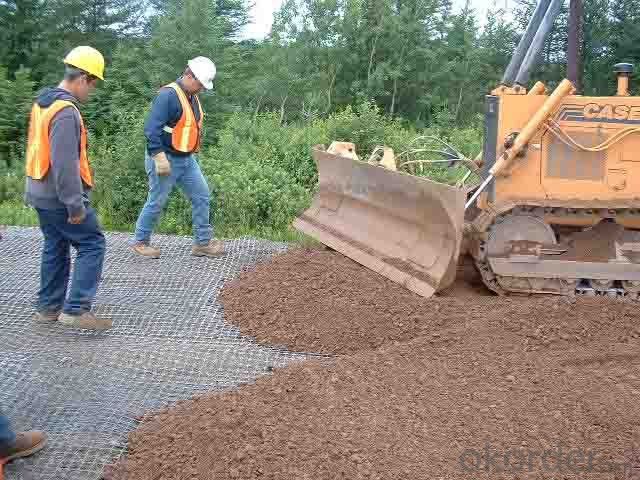
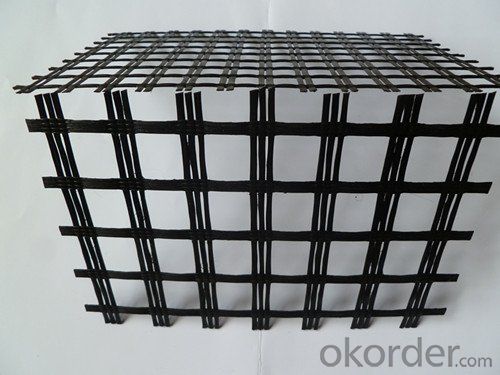
Performance of Fiberglass Geogrid:
--- High strength, high modulus and low temperatures resistance.
Applications of Fiberglass Geogrid:
--- Reinforcement for road pavement
--- Reinforcement for railway basement
--- Reinforcement for Tunnel
--- Reinforcement for Slope
--- Reinforcement for embankment.
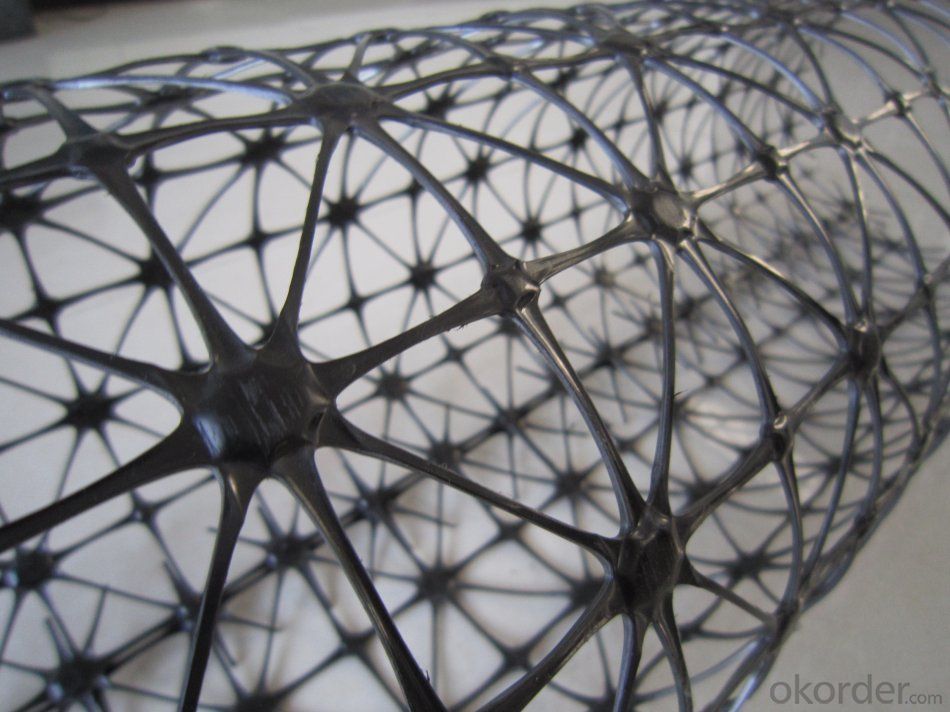
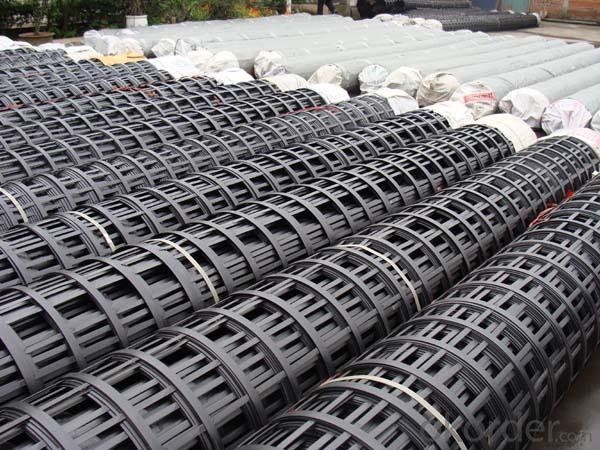
Features of PP Biaxial Geogrid:
1. With high tensile strength in longitudinal and transversedirections
2.This structure can provide an chain system of more effective force bearing and spreading for the soil.
Application of PP Biaxial Geogrid:
Mainly applied in highway, railway, slope protecting projects etc.
1)strengthen land loading capacity and extend its service life.
2) convenient to construct ; reducing project cost and maintenance cost.
Features of Polyester Geogrid:
1) High tensile strength
2) High tear-resistant
3) Strong combination with gravel and soil
Application of Polyester Geogrid:
It mainly applied in strengthening soft ground of rail and road.
FAQ:
Q1: What is your minimum order quantity?
A:The minimum order quantity is 5000 ,but it is negotiable.
Q2:What is your payment terms?
A: T/T,Western Union,Paypal,L/C...
Q3:What is your delivery time?
A:Production time usually costs 2-20 days.
Waiting to cooperate with you!
- Q: Can geogrids be used in soil stabilization for sports fields?
- Yes, geogrids can be used in soil stabilization for sports fields. Geogrids are commonly used to reinforce and stabilize soil, preventing erosion and improving load-bearing capacity. They can effectively distribute loads and provide stability in sports fields, ensuring a safer and more durable playing surface for athletes.
- Q: Can geogrids be used in stabilization of canal banks?
- Yes, geogrids can be used in the stabilization of canal banks. Geogrids are commonly used in civil engineering projects to reinforce and stabilize soil structures. By incorporating geogrids into the canal bank, they can provide increased tensile strength and prevent soil erosion, ultimately enhancing the stability and durability of the canal banks.
- Q: Can geogrids be used in green wall systems?
- Yes, geogrids can be used in green wall systems. Geogrids provide stability and reinforcement to the structure, helping to support the weight of the green wall system and prevent soil erosion. They can be used to create a strong foundation and provide additional support for the plants, ensuring the success and longevity of the green wall.
- Q: What are the design considerations for geogrids in reinforced soil slopes prone to seismic activity?
- The design considerations for geogrids in reinforced soil slopes prone to seismic activity include selecting the appropriate type and strength of geogrids, considering the geometry and layout of the reinforcement, accounting for the dynamic forces and accelerations during seismic events, ensuring proper connection and anchorage of the geogrids to the soil, and conducting thorough stability analyses to assess the safety and performance of the reinforced slope under seismic loading.
- Q: How do geogrids improve the stability of embankments?
- Geogrids improve the stability of embankments by providing additional reinforcement to the soil. They are made of high-strength materials and are placed within the soil layers to distribute the load more evenly. Geogrids increase the friction between the soil particles, preventing excessive movement and settlement. This reinforcement helps to resist the forces of gravity and external loads, ultimately enhancing the overall stability and longevity of the embankment.
- Q: Refers to the size of the geogrid mesh holeSpecific attention is not clear, the banner of Chang Chang official CafeThere's something you're looking forGrille generally by the vertical and horizontal staggered from the simple meaning of space can also be understood that the size of the lattice gap.
- Geogrid generally by horizontal and vertical staggered from the simple meaning of space can also be understood that the size of the lattice gap.
- Q: Are geogrids effective in stabilizing riverbanks?
- Yes, geogrids are effective in stabilizing riverbanks. They provide reinforcement and support to the soil, preventing erosion and maintaining stability along the riverbanks.
- Q: What are the factors affecting the durability of geogrids?
- The factors affecting the durability of geogrids include the type and quality of materials used in their construction, exposure to environmental conditions such as sunlight, temperature variations, and moisture levels, as well as the level of stress and strain they are subjected to during their lifespan. Proper installation and maintenance also play a crucial role in preserving the durability of geogrids.
- Q: Engineering effect of steel plastic geogrid
- 1, high strength, small creep, adapt to all kinds of soil environment, can fully meet the use of high grade highway retaining wall.2, can effectively improve the reinforced bearing surface, occlusal function, interlocking greatly improve foundation bearing capacity, effectively restrain the soil lateral displacement of reinforced foundation, stable performance.3, compared with the traditional grid has greater strength, strong bearing capacity, corrosion resistance, anti-aging, friction coefficient, perforated uniform, convenient construction, long service life and other characteristics.
- Q: Specifications and parameters of Geotextiles
- Types of geotextiles is various, so the geotextile material in macro Xiangxin staple fiber needle punched geotextile is often said that as an example, introduce the specifications and parameters.
Send your message to us
High Strength Polymer Geogrids
- Loading Port:
- China main port
- Payment Terms:
- TT OR LC
- Min Order Qty:
- 5000 m²
- Supply Capability:
- 1000000 m²/month
OKorder Service Pledge
OKorder Financial Service
Similar products
Hot products
Hot Searches
Related keywords
